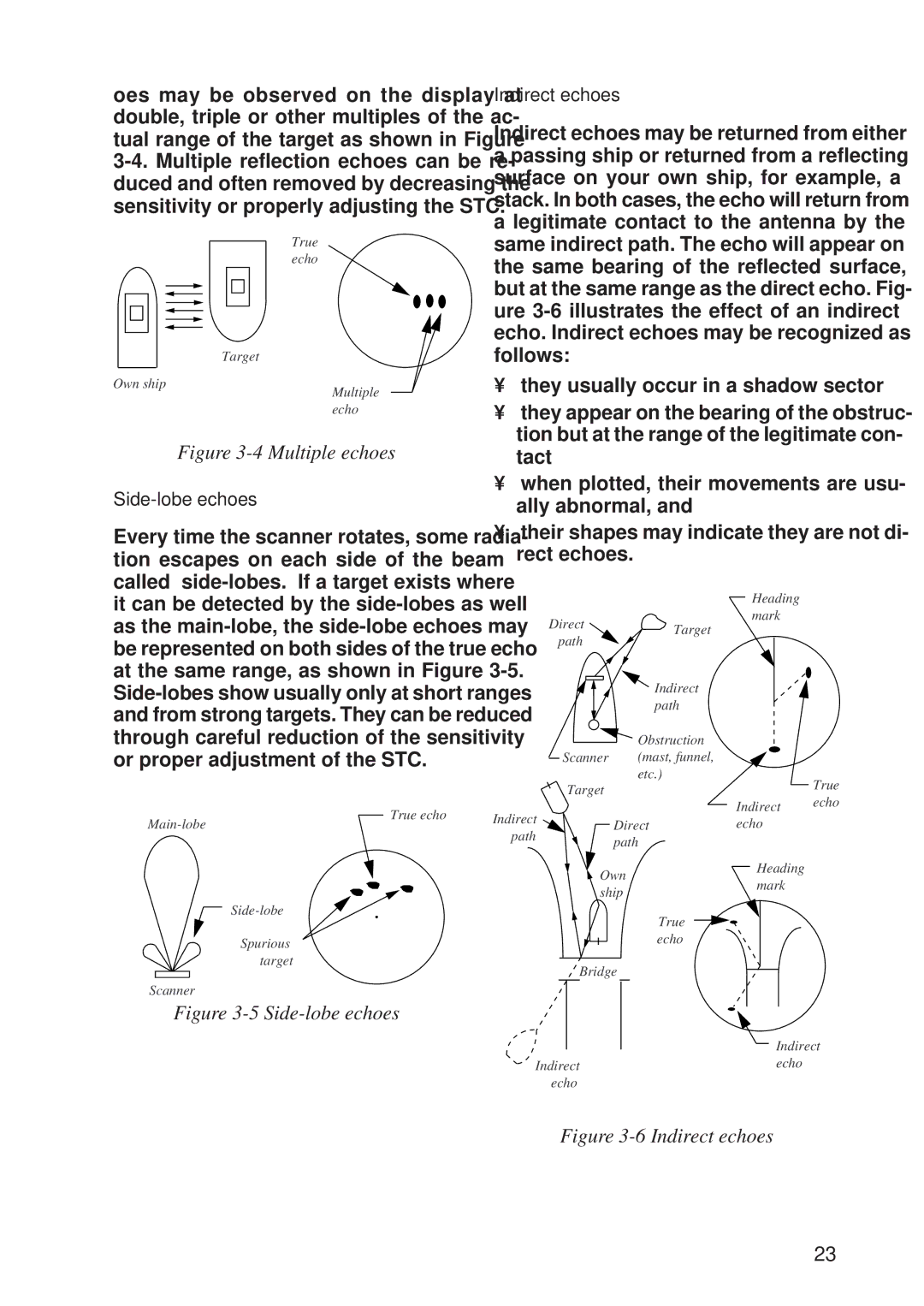
oes may be observed on the display at double, triple or other multiples of the ac- tual range of the target as shown in Figure
True echo
Target
Own ship
Multiple echo
Figure 3-4 Multiple echoes
Side-lobe echoes
Every time the scanner rotates, some radia- tion escapes on each side of the beam— called
Indirect echoes
Indirect echoes may be returned from either a passing ship or returned from a reflecting surface on your own ship, for example, a stack. In both cases, the echo will return from a legitimate contact to the antenna by the same indirect path. The echo will appear on the same bearing of the reflected surface, but at the same range as the direct echo. Fig- ure
•they usually occur in a shadow sector
•they appear on the bearing of the obstruc- tion but at the range of the legitimate con- tact
•when plotted, their movements are usu- ally abnormal, and
•their shapes may indicate they are not di- rect echoes.
| Heading |
|
Direct | mark |
|
Target |
| |
path |
| |
|
| |
| Indirect |
|
| path |
|
| Obstruction |
|
Scanner | (mast, funnel, |
|
Target | etc.) | True |
| ||
| echo | |
| Indirect |
True echo
Indirect | Direct | echo | |
path | |||
path |
| ||
|
| ||
| Own | Heading | |
| mark | ||
| ship | ||
|
|
Spurious target
Scanner
Figure 3-5 Side-lobe echoes
True echo
Bridge
Indirect
Indirectecho echo
Figure 3-6 Indirect echoes
23
